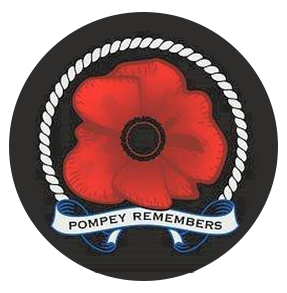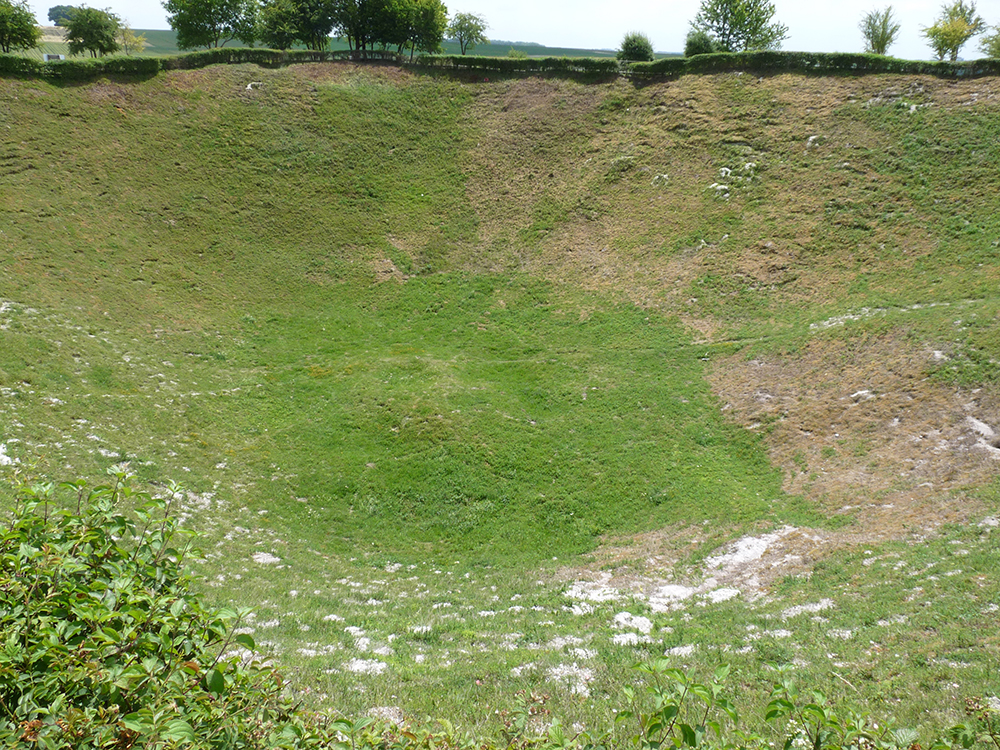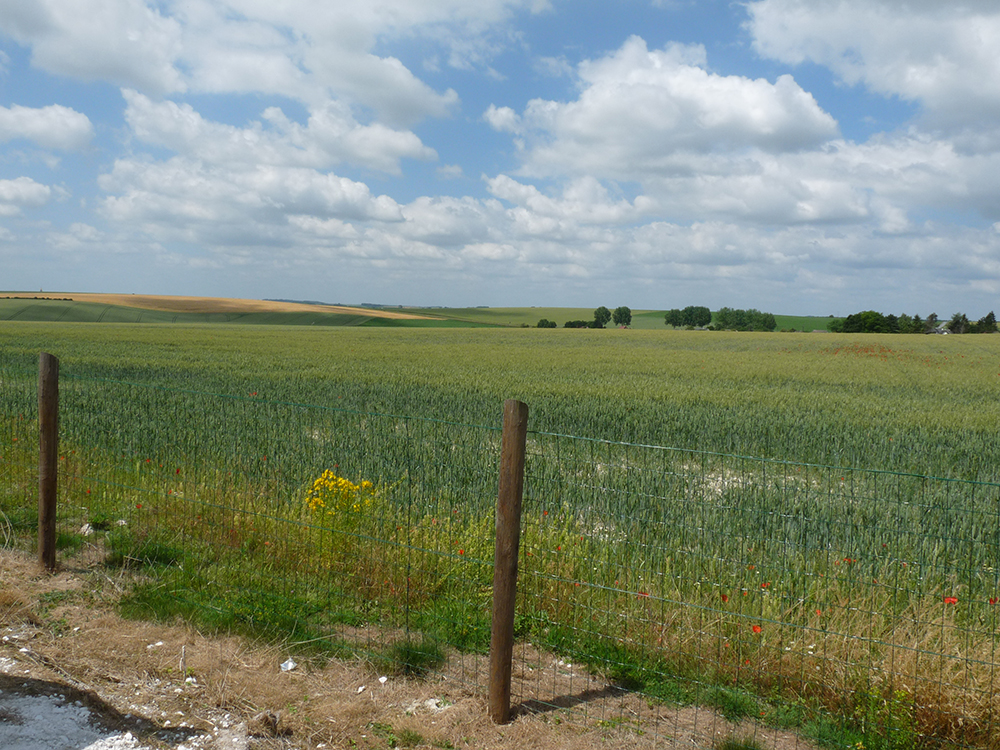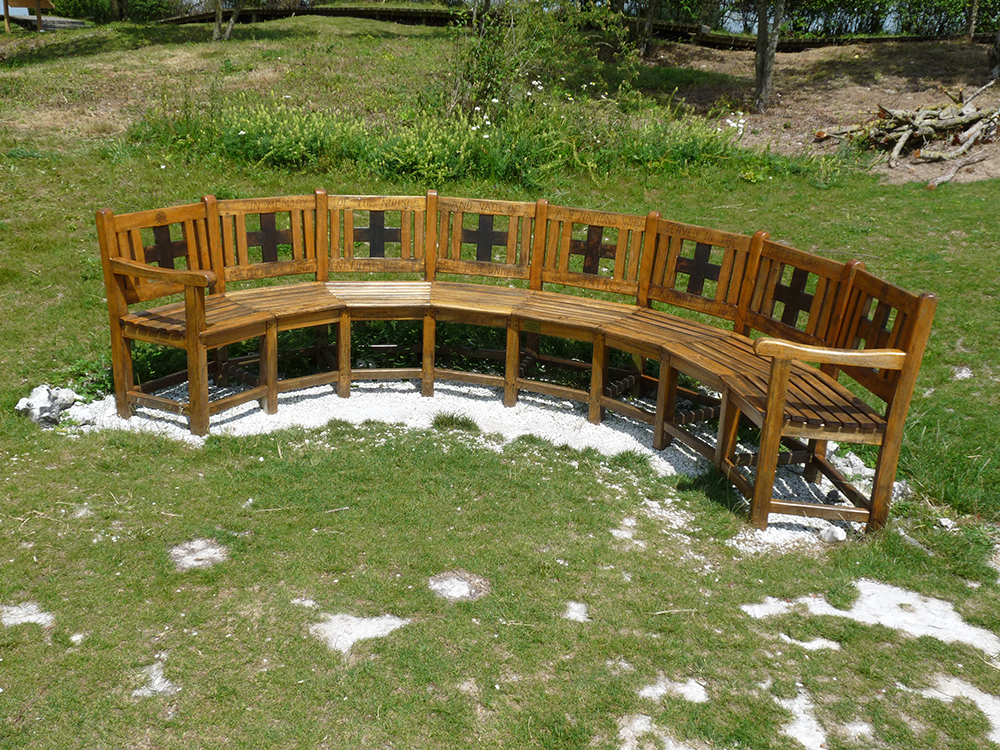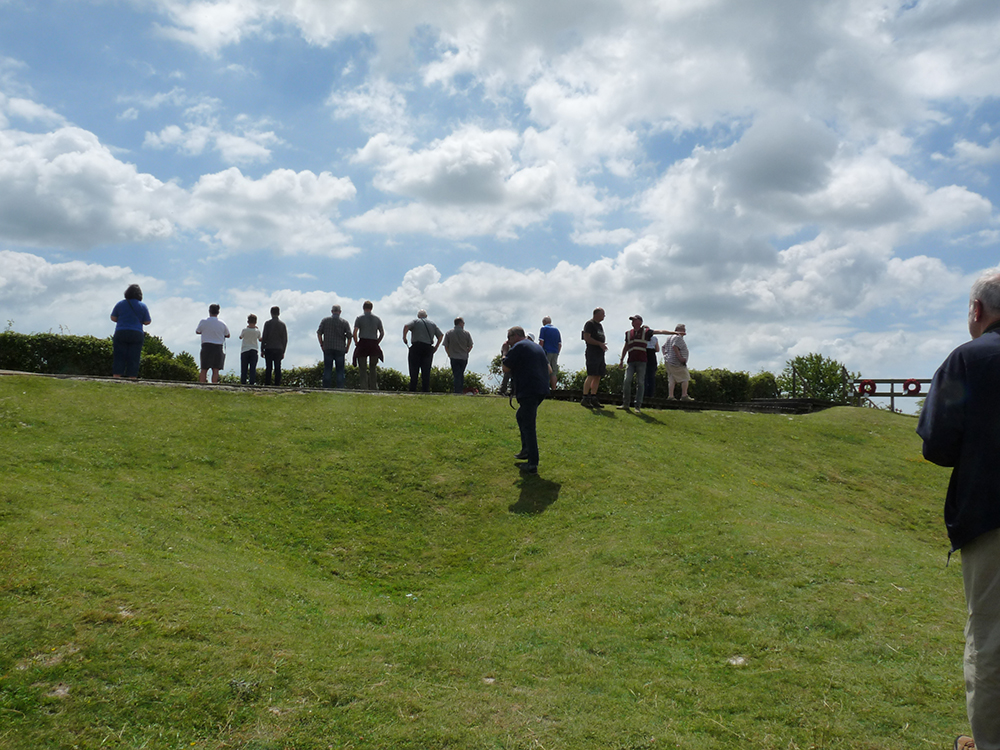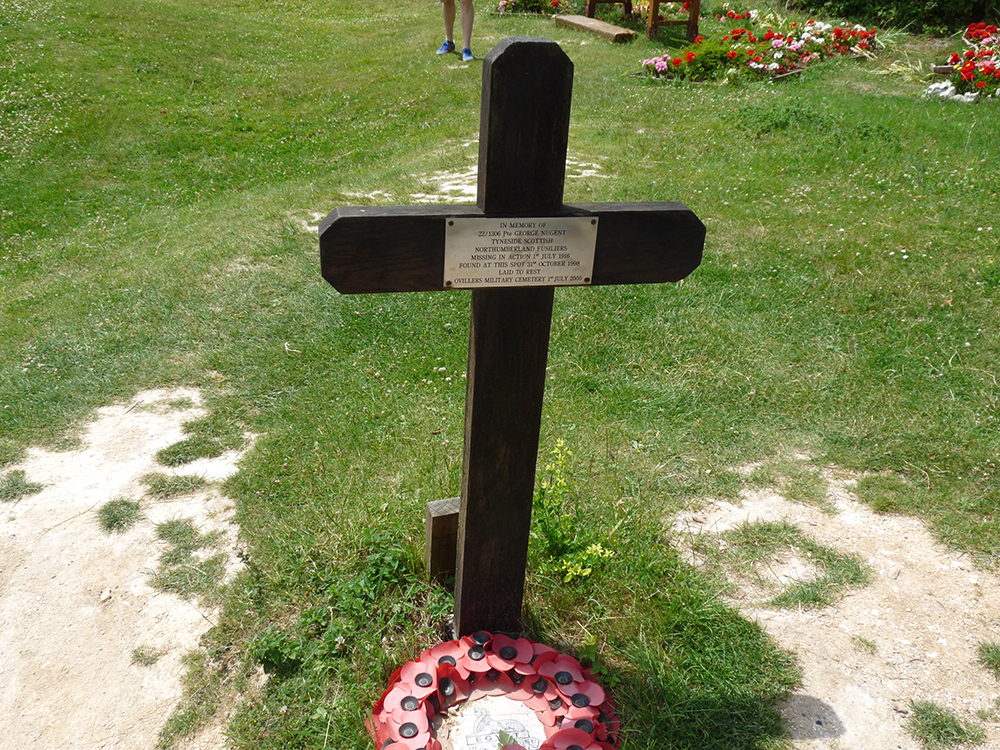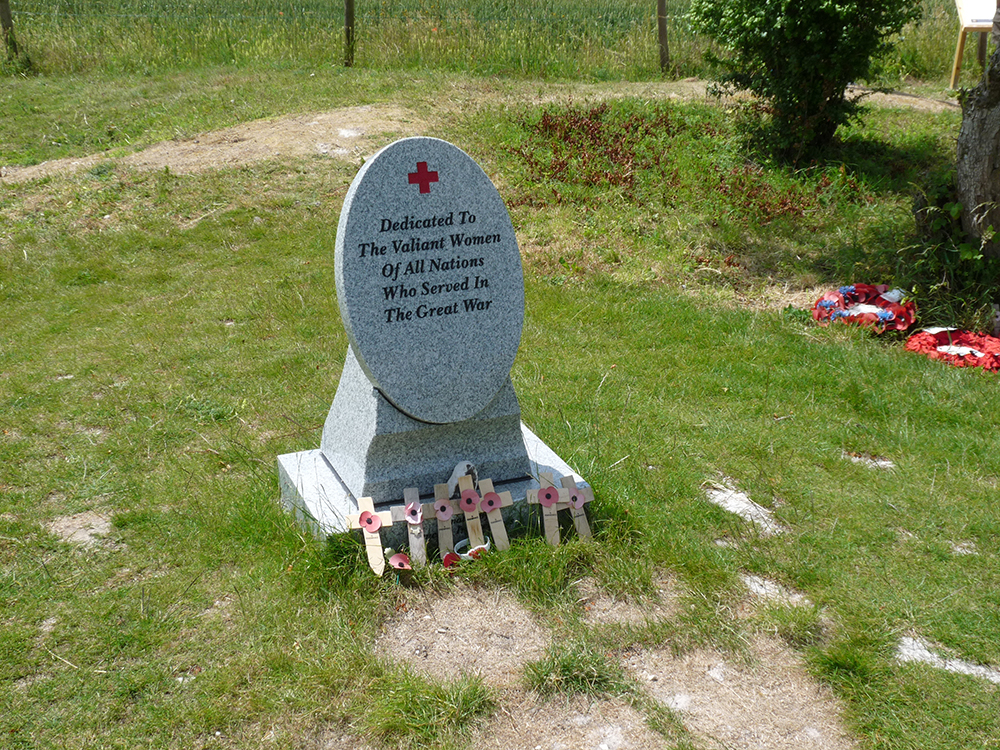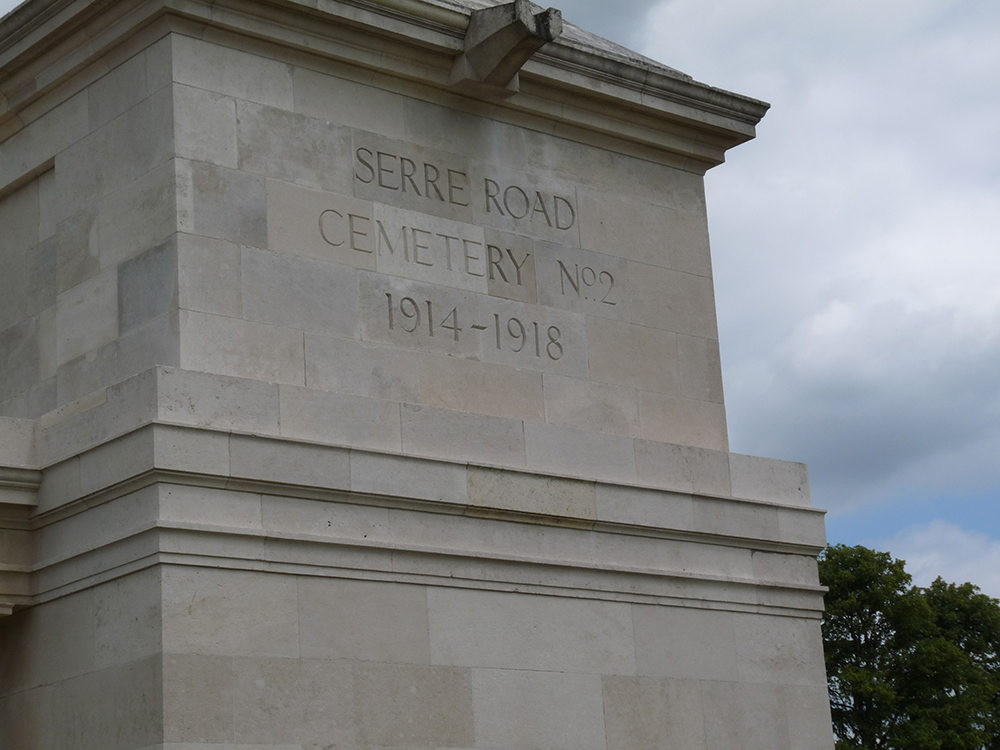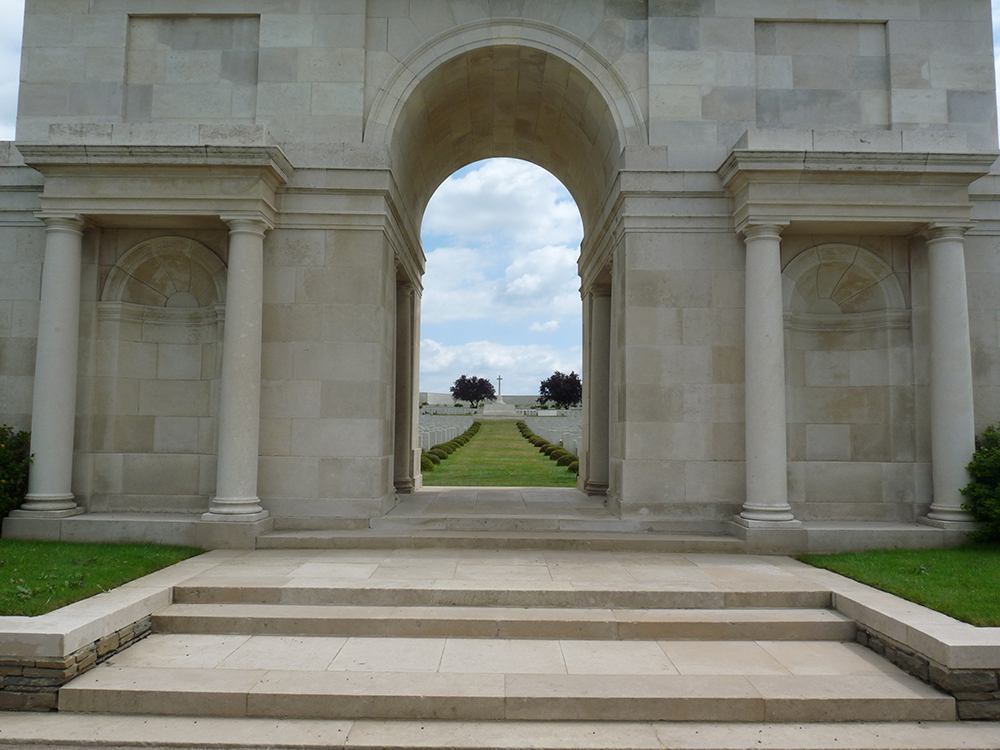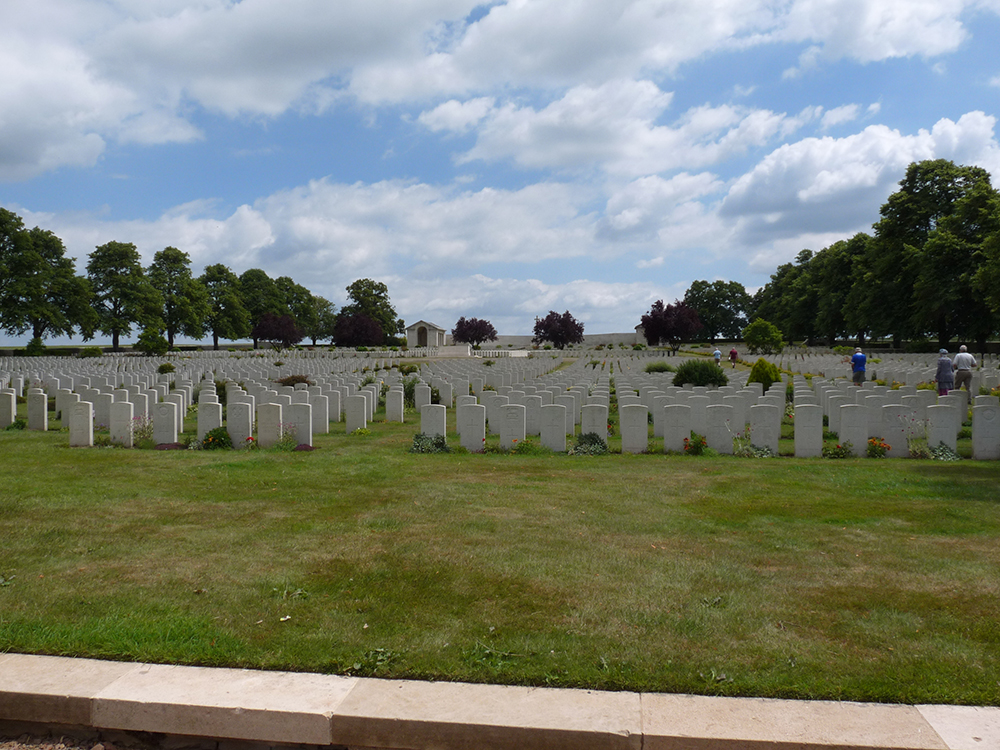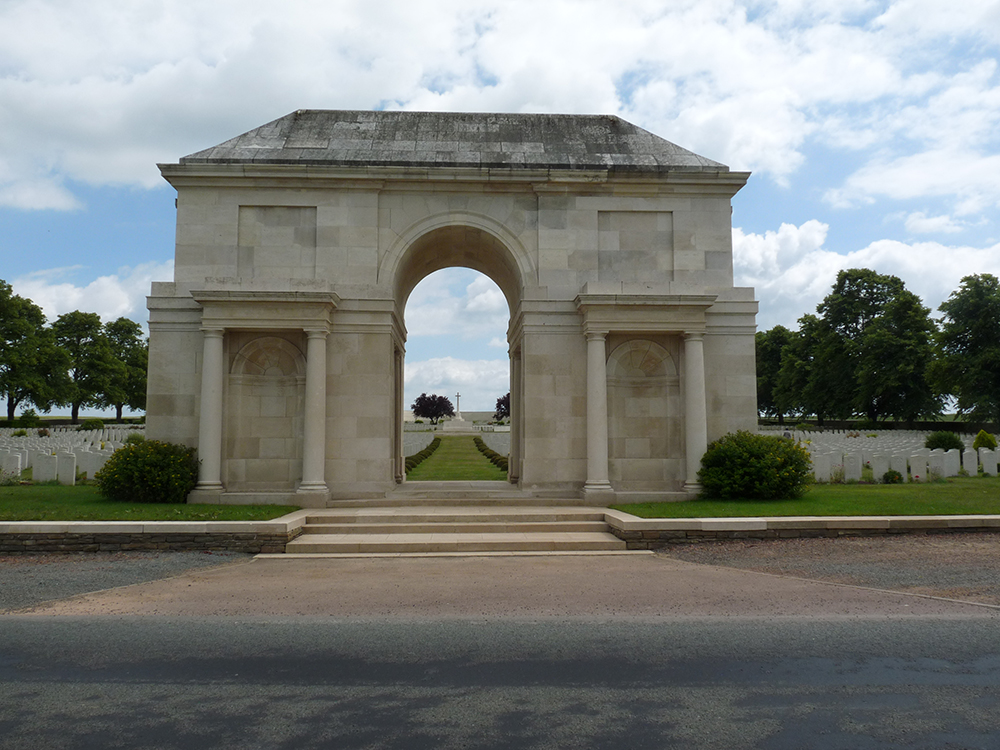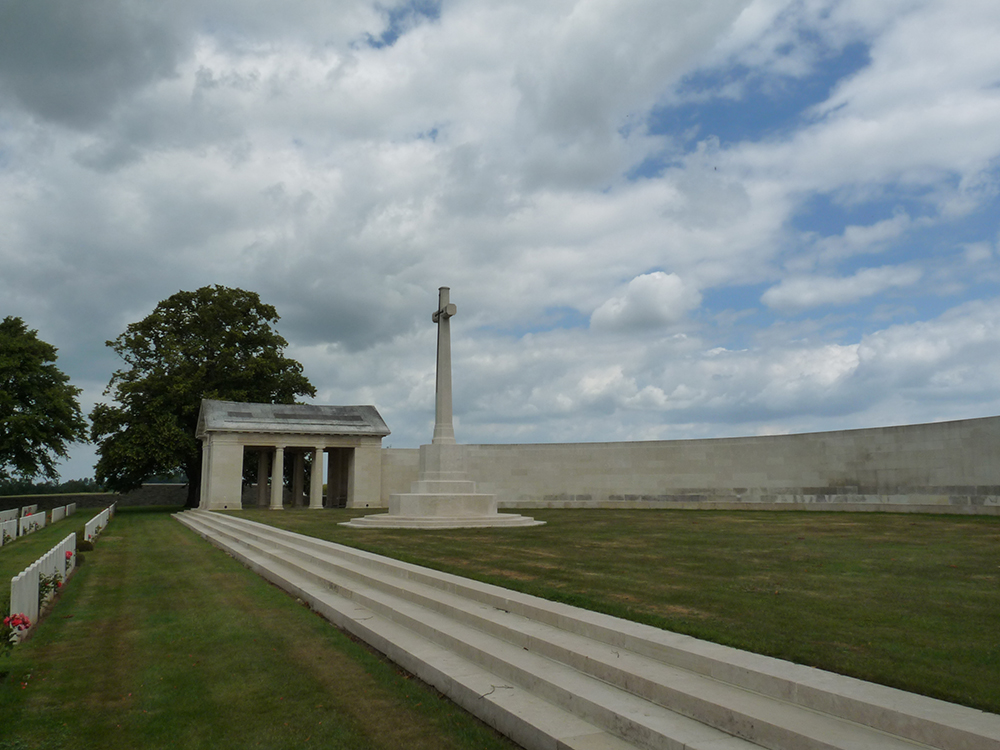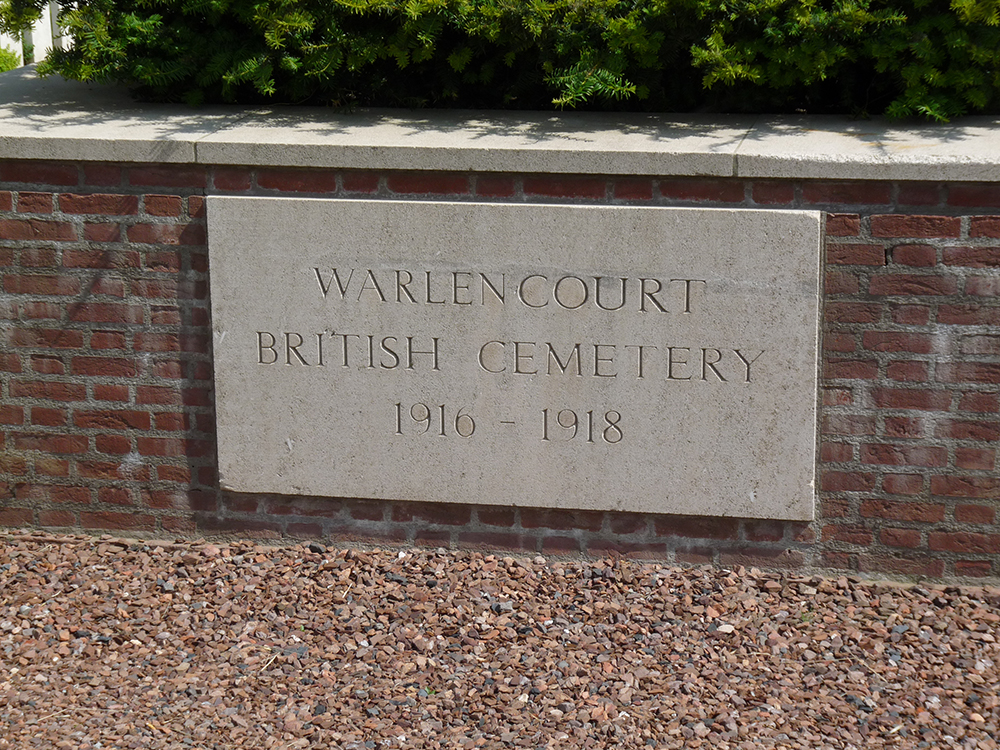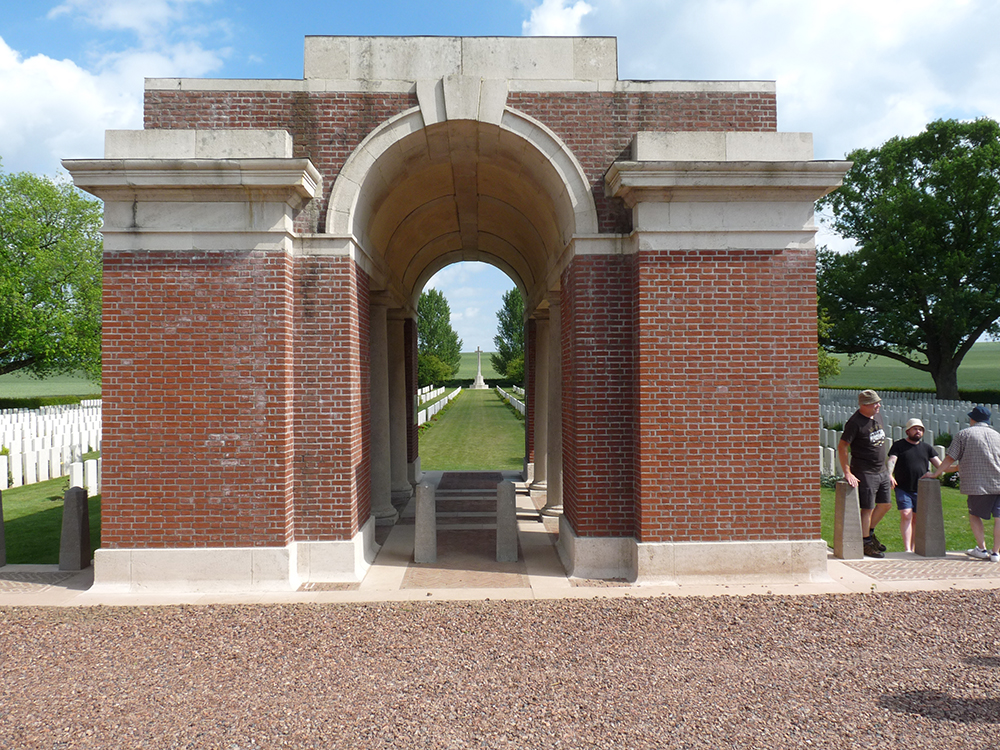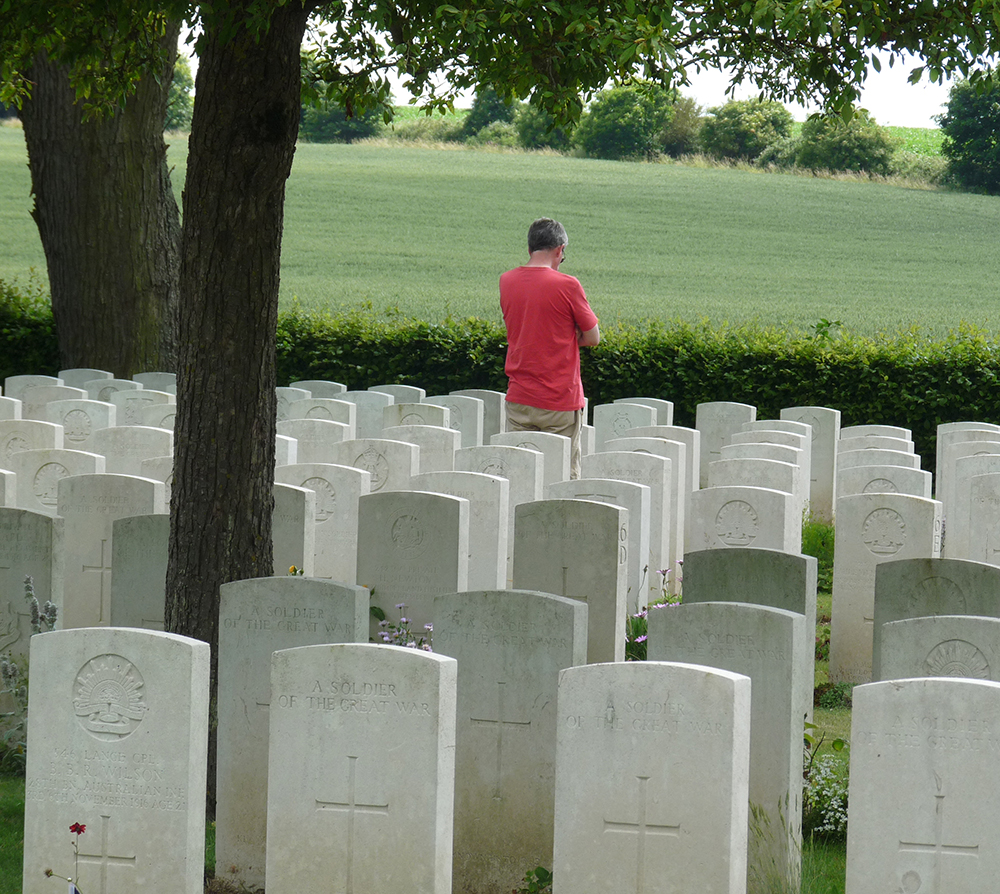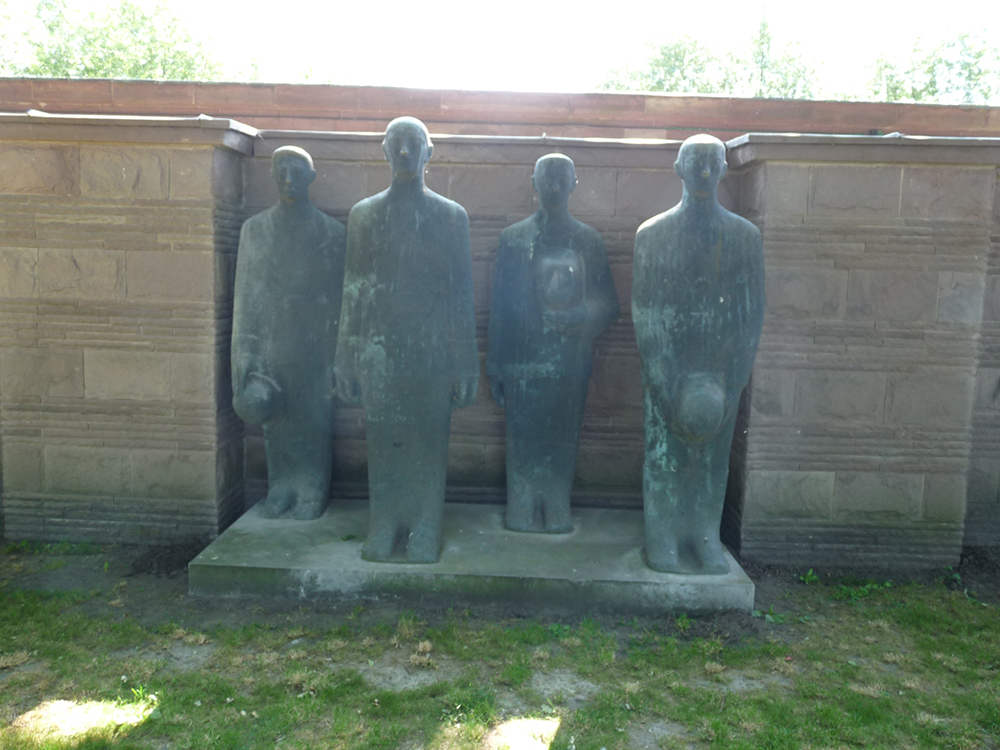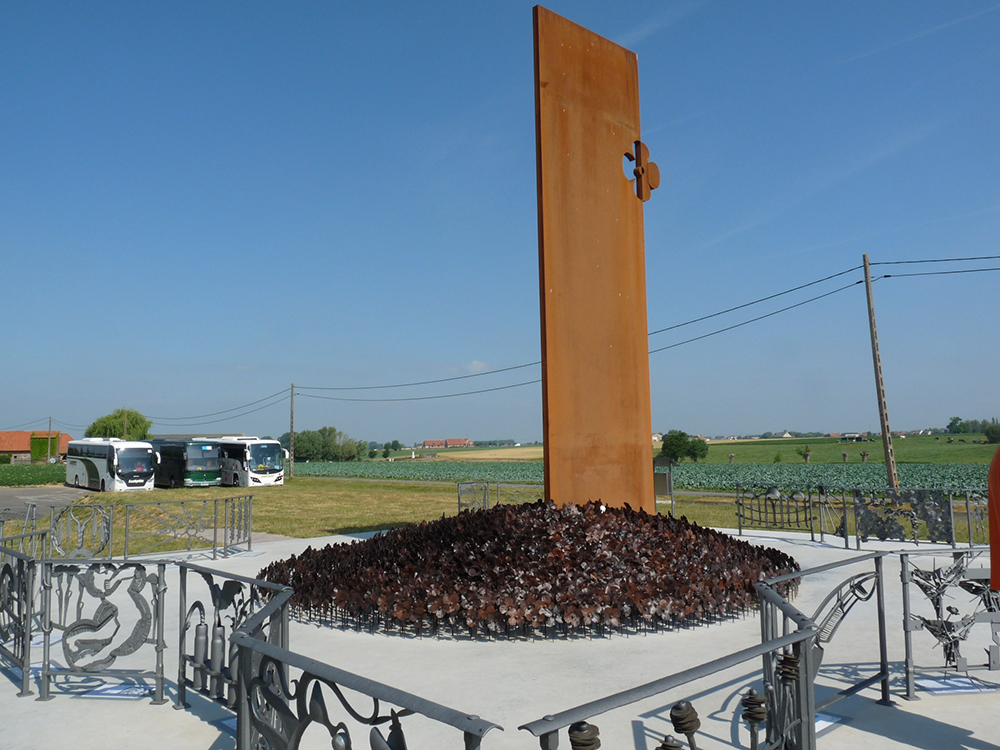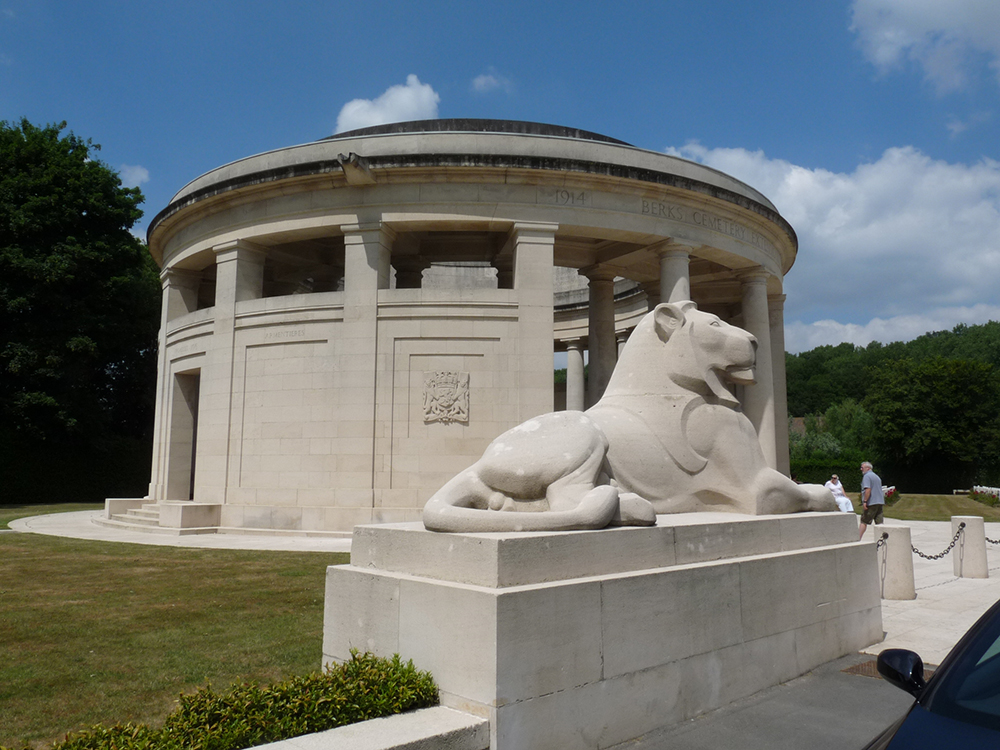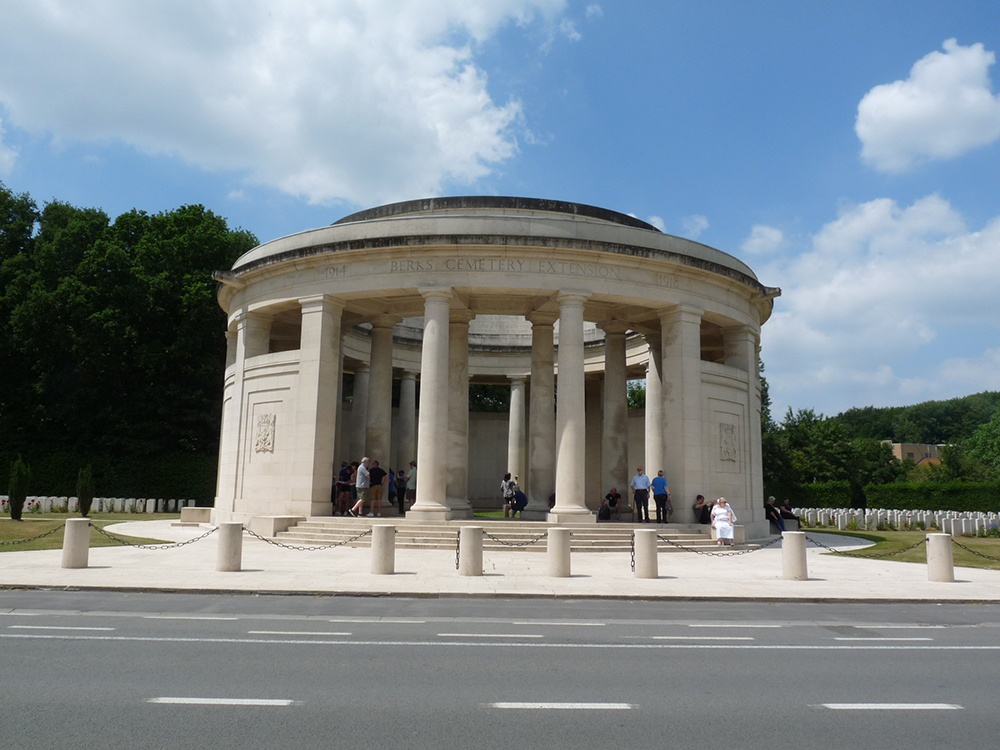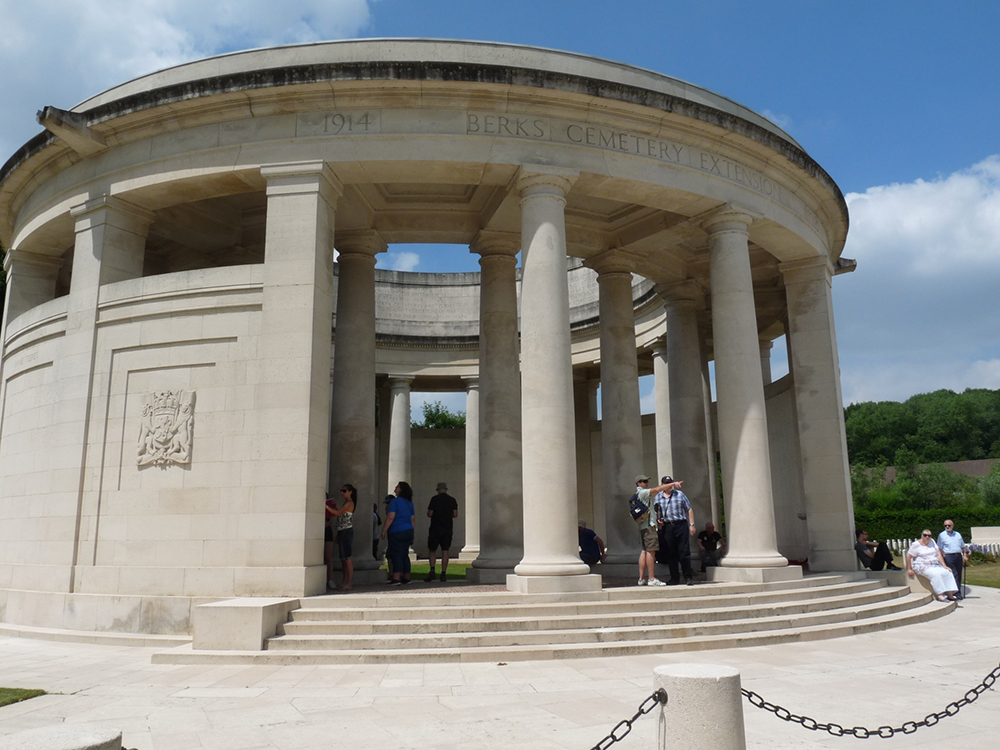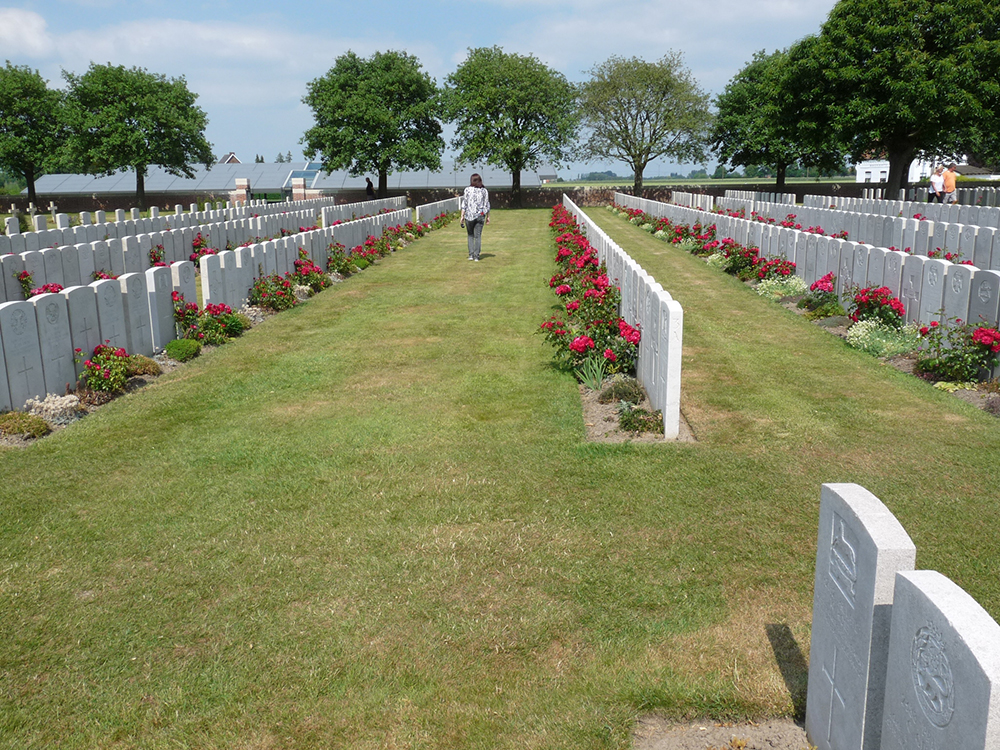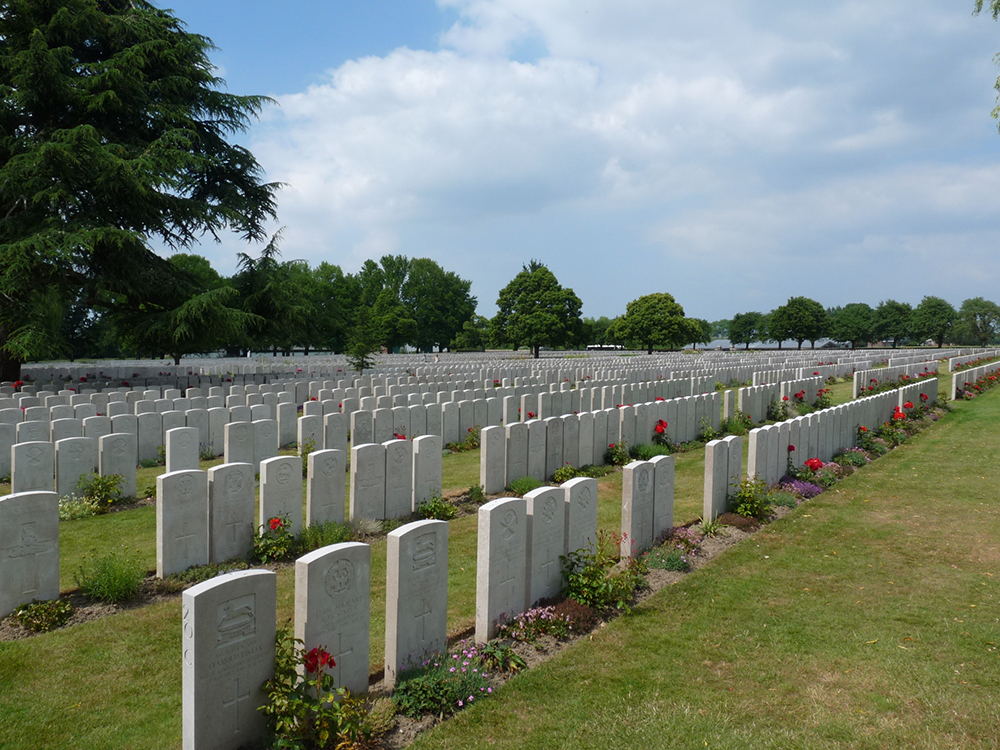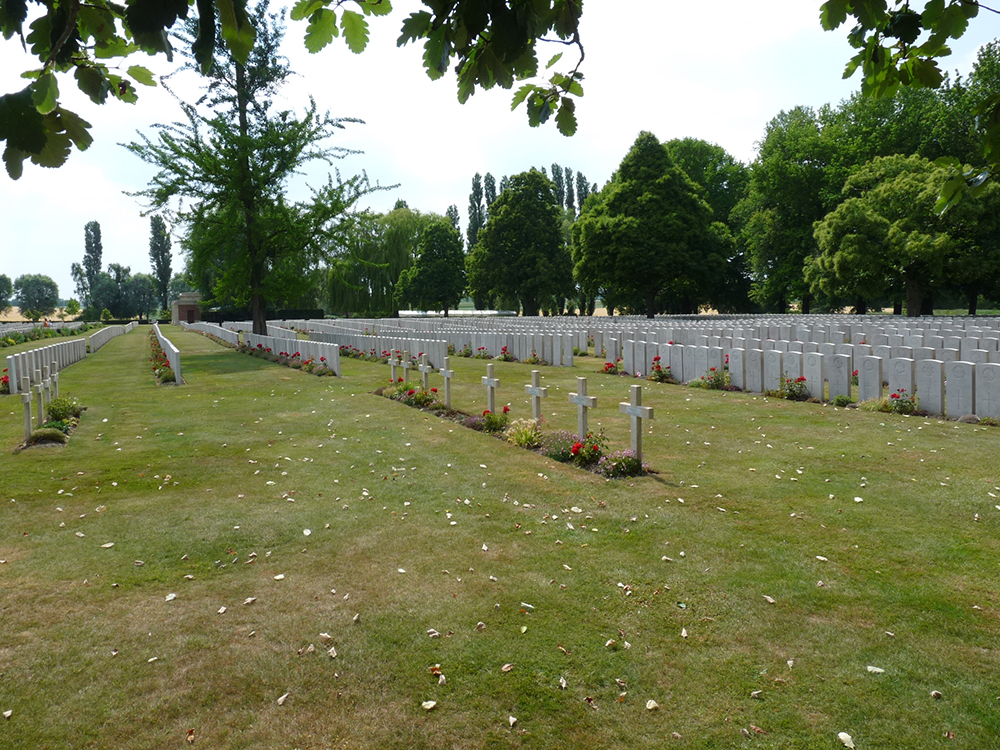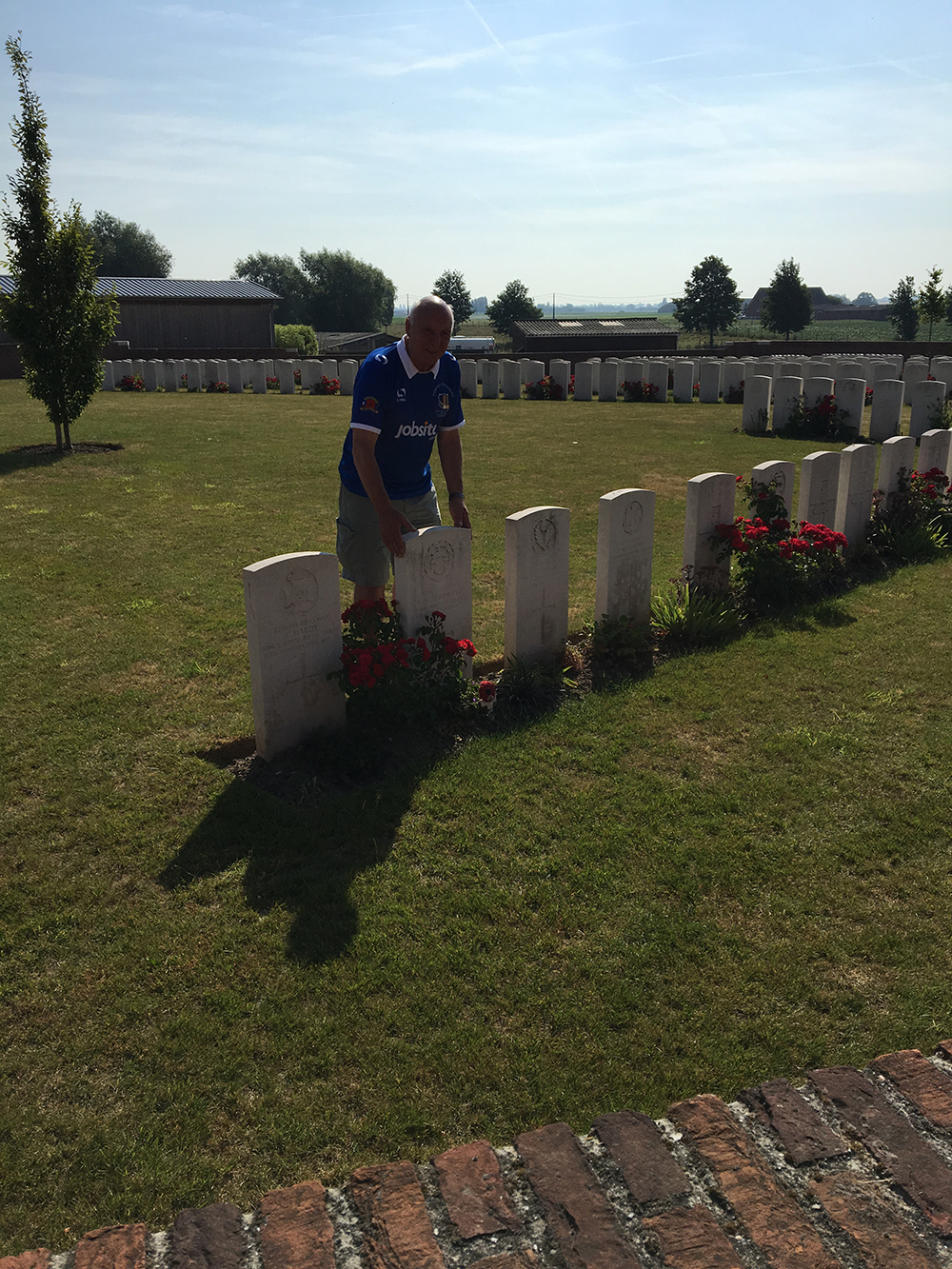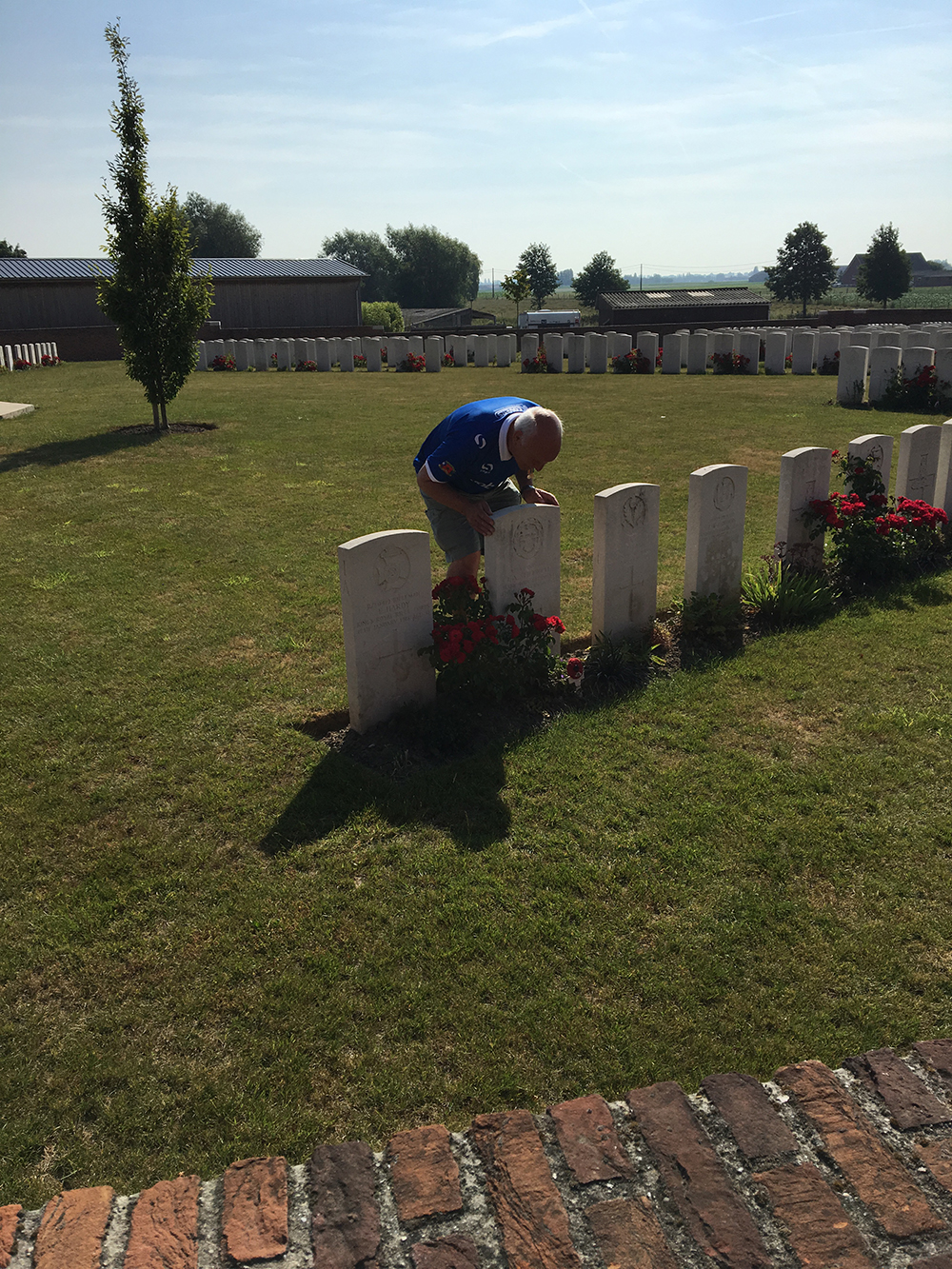In the footsteps of heroes…
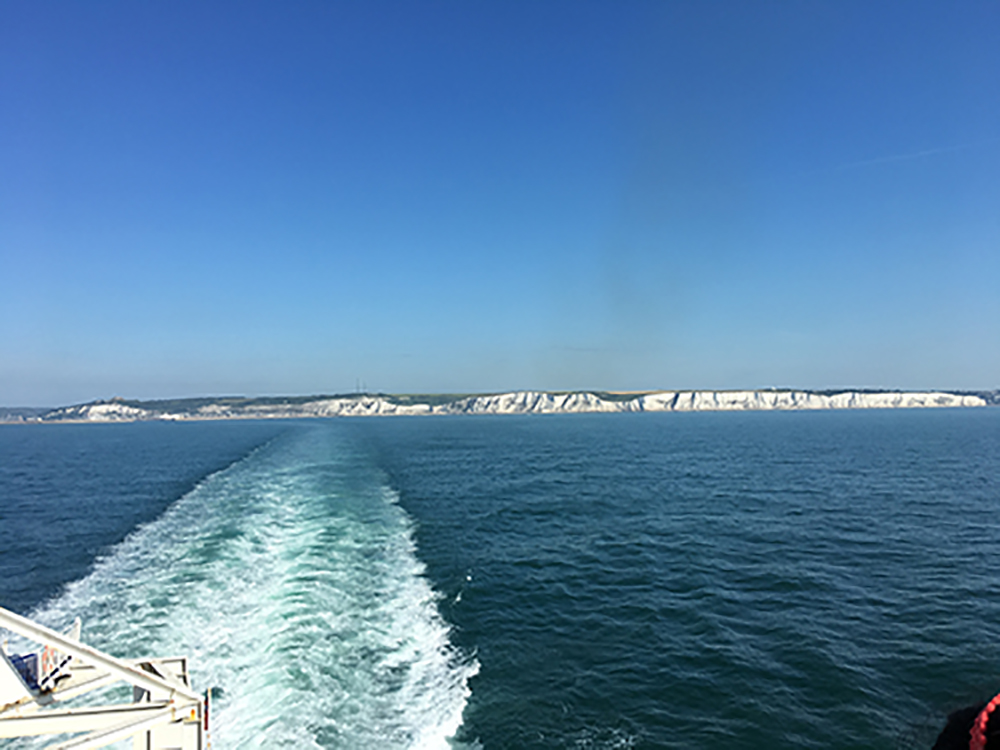
Leaving Blighty
Day one
POMPEY REMEMBERS TOUR 2017
When the alarm went off at 3.30 am on Saturday 17 June, so began a weekend full of emotion, nostalgia, pride, education and remembrance.
A motley crew of 30 people ranging in ages from 10 to 85; two young boys only slightly younger than some of the soldiers from the Great War, middle-aged enthusiasts, people with family ties to the Pompey Pals and other regiments and some who just wanted to pay their respects, set out on the road to Dover with bleary eyes but huge enthusiasm under the guidance of leading Portsmouth WW1 Researcher Alan Laishley and Baxters Battlefield Tours (Stuart, Paul and Mario),

What were the chances…?
A stop over for a quick service station breakfast on the way fortified the tourists for the journey ahead. On arrival at Dover, a removal truck bedecked in Portsmouth badges drew up next to the coach in the check in lanes to the amusement of those onboard.
Boarding the ferry on a beautiful clear day, the sight of the white cliffs of Dover disappearing into the distance was a sight to behold, but brought to mind the feelings of those young men who had made the same journey from Dover, or Portsmouth or countless other ports but who had no idea whether they’d ever make the return trip to see them again!.
Lochnagar Crater.
The first stop was Lochnagar Crater. The guide, David Thomson, told the harrowing story of the battle that commenced with the explosion of two mines set by the British. The size of the crater gives an indication as to the size of the explosion.
It sent soil so high into the sky that a passing Royal Flying Corps plane piloted by Cecil Lewis was thrown sideways and then subjected to soil raining into the cockpit!
The photos below do not do justice to the size of the crater!
The Crater left by the exploded mine
The battlefield that saw such huge loss of life
A bench to honour the contribution of Nurses
Following the explosion of the mine, the British troops advanced to try to take advantage of the chaos they hoped it had caused in the German lines but within half an hour 6500 men had been killed. This was the first of many breathtakingly horrific facts that the tourists were to discover on this trip.
In the far distance, glinting in the sunshine was the statue of the Golden Madonna. It was a sobering and rather eery thought that this statue would have been visible to the soldiers during the battle. How strange must it have been to be fighting, seeing your comrades wounded and dying and then to look up and see a golden statue standing tall in the nearby town of Albert.
On a lighter note, the statue, perhaps inevitably, became known as the Golden Madonna with the big boobies – as in the TV comedy “‘allo ‘allo”.
The Golden Madonna Statue (left)
(taken from the coach window)
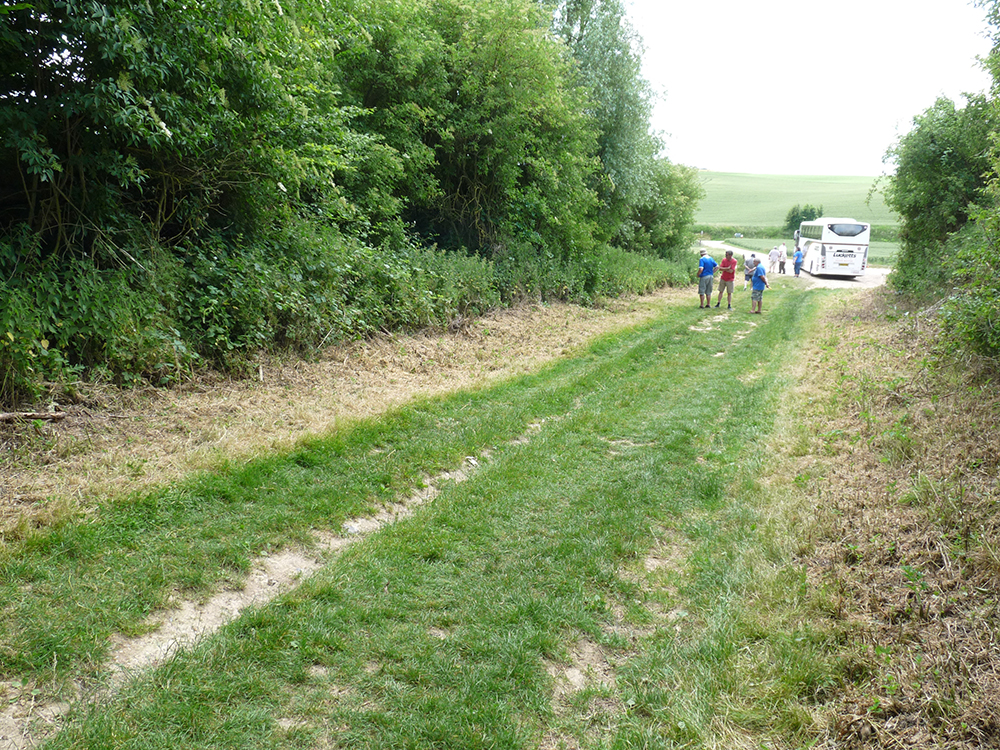
Sunken Road is a quiet and tranquil, country road today
Having left Lochnagar Crater, the tourists moved on to the battlefield at Sunken Road where soldiers from Portsmouth were involved. Paul Prendergast from Baxters, set the scene pointing out the positions of the opposing forces and even showed photographs of soldiers waiting in the very lane where the tour bus was parked.
It seemed that the soldiers involved here were at a huge disadvantage as they emerged over the ridge to machine gun fire from the Germans who had the “high ground”.
The expression “the high ground” became a recurring theme throughout the tour. Although most of the battlefields visited were vast expanses of land, they seemed to have very little actual high ground. However, any undulation, ridge, or small hill became absolutely critical to the success of the battles and to the numbers of casualties inflicted on the ascending troops.
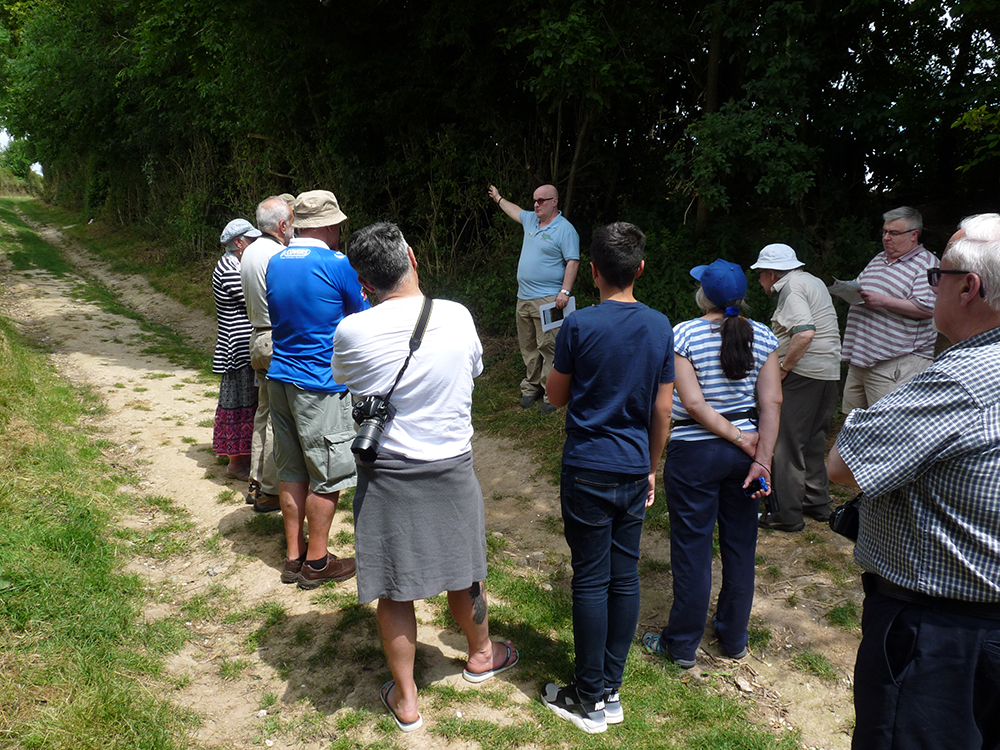
Listening to Paul from Baxter’s explaining the logistics of the battlefield
The first of many cemeteries was visited next. The white headstones in immaculate regimented rows softened with flowers chosen as a reminder of a British garden became an all too familiar site.
Serre Road Cemetery
Whilst being aware of the involvement of so many Commonwealth troops in the First World War, the sheer number of casualties sustained was, as with the British casualty numbers, simply shocking. The battle in Delville Wood involving the South African troops, who only a few years previous were fighting the British in the Boer War, was so fierce it led to the South African government buying an area of the land there to establish a memorial to all those lost.
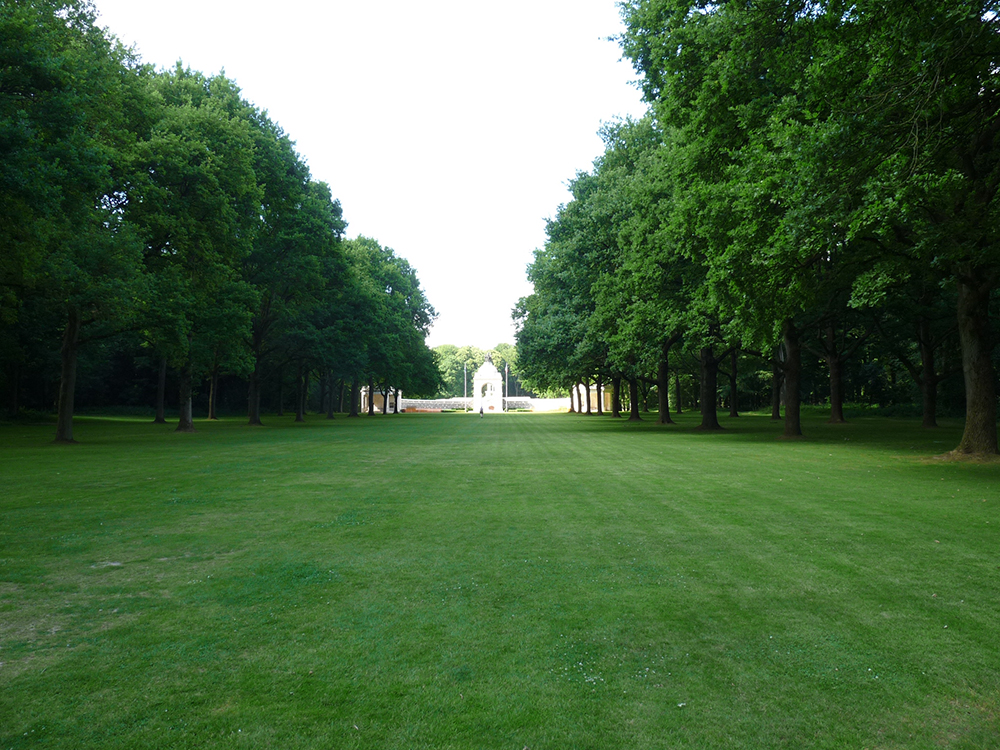
The South African Memorial at Delville Wood
The first day of this Pompey Remembers tour concluded with a visit to the iconic Thiepval Memorial. As well as the resting place of a symbolically equal number of French and British troops, this memorial contains the names of a quite frankly staggering 72,246 British and South African troops who have no known grave.
One name mentioned on the memorial is George Jakes from Portsmouth who was just 15 years old.
It seemed appropriate in the light of this that the youngest member of the party be the one to lay a wreath at the memorial.
With the sun now setting on a long day, the coach headed for the Belgian city of Ypres. This city was devastated during the First World War but the reconstruction of the impressive buildings, the stunning architecture of the main square, the iconic Menin Gate and the beautiful weather meant that the party had a culturally rewarding stay as well as partaking in the research of some local brews!.
So endeth the first day!
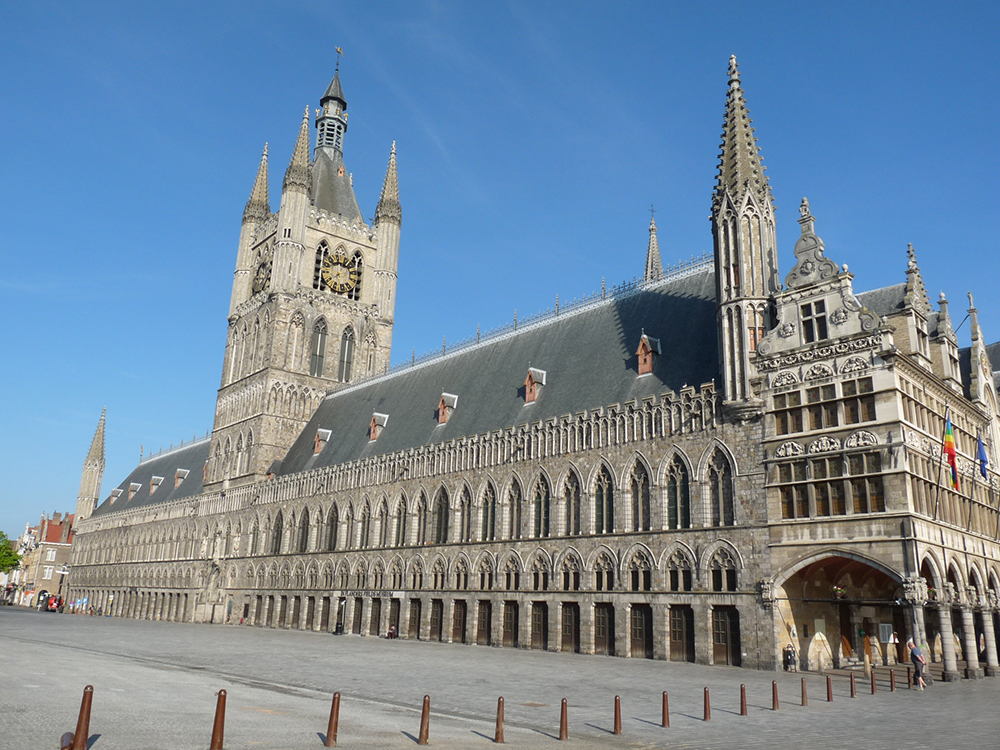
The spectacular Cloth Hall, that was almost totally destroyed during the Great War, is now totally restored and dominates Ypres today
Day Two
The Menin Gate
Visiting the Menin Gate was first on the agenda of Day Two. Like the Thiepval Memorial, it contains the names of British, Irish and Commonwealth forces who have no known grave. There are 54,389 names inscribed on the memorial and every night since 1928, the road through the gate is closed to traffic so that at 8pm the buglers from the local Fire Brigade can perform the Last Post ceremony and wreaths can be laid.
Having explored the memorial and inspected the inordinate number of names inscribed on it, it was time to move on to the next engagement of the day.
However, on the way there was a rather unfortunate diversion. Having discovered the road was closed, the satnav then sent the coach into what appeared to be a housing estate. Things began to look bad when the coach was struggling to turn corners without threatening road signs or people’s houses. As the coach progressed, the roads became more and more narrow until it got to a place where the corner was impossible to negotiate. At this point the driver earned his stripes. Despite having a coach full of back seat drivers plus the residents of the houses watching and wondering what was going on, the driver proceeded to reverse the coach all the way back out of the estate. This was a long and precarious task; cars parked on both sides of the road and narrow roads with tight corners. Having finally freed the coach from the cul-de-sac, a round of applause borne out of admiration and huge respect broke out on the coach!
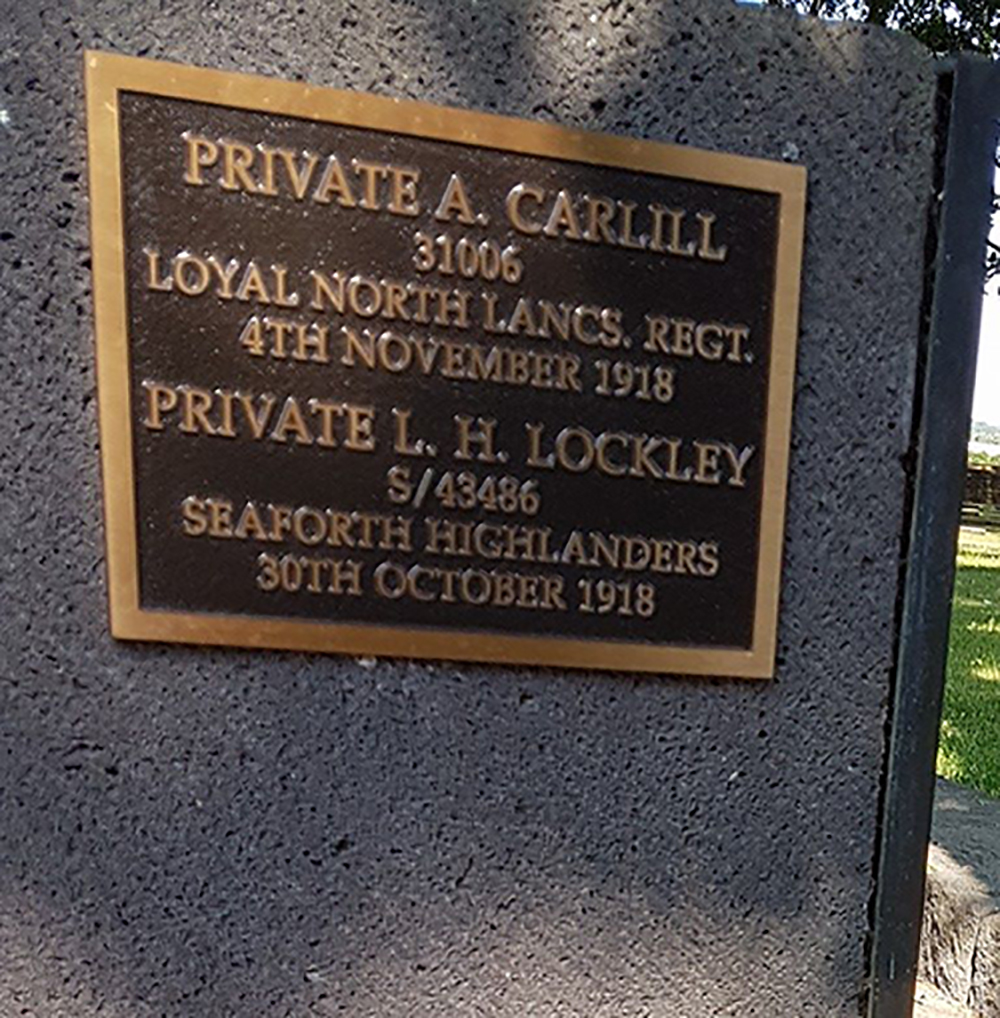
The next stop was the German cemetery at Langemaark, which, rather unexpectedly, has a Portsmouth connection. Private Leonard Lockley, born on the Isle of Wight, but who later moved to Morland Road, Southsea is named on a plaque in the cemetery. Having been taken prisoner, Private Lockley subsequently died and was inadvertently buried, along with another British soldier, with the German dead when graves were relocated into segregated cemeteries at the end of the war. The plaque was only recently added by the CWGC.
The look and feel of the German cemetery is in stark contrast to that of the British/Commonwealth troops. Whilst the CWGC aim to make the cemeteries have the feel of a British country garden, the German version is an altogether more basic, no frills approach.
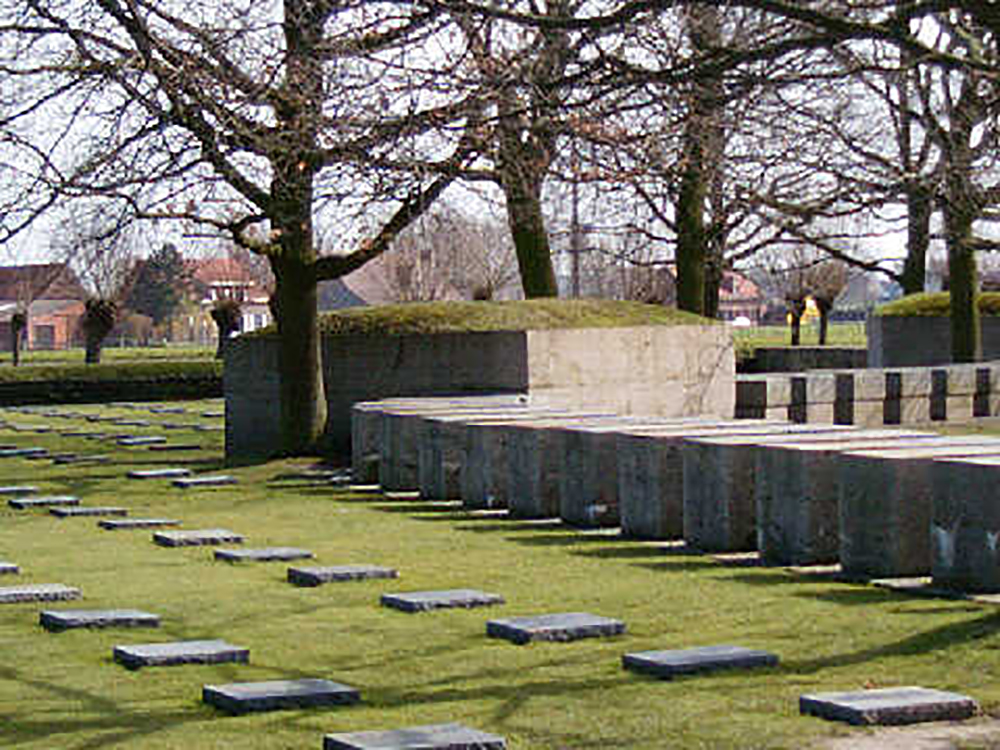
Langemaark German Cemetery
There also stands the figures of four mourners looking over all those buried. The graveyard was once visited by Adolf Hitler which could account for the rather unnerving feel to the place made worse when a large group of bikers slowed down whilst saluting in the Nazi style as they passed.
To lighten the mood (a little) next stop was Hill 62. Here the original trenches are still intact and give some idea as to the amount of space that the troops had to live in. Built in a zig zag fashion to lessen the effects of any direct hits, these trenches have areas for cooking and sleeping as well as tunnel entrances. New trees surround the trenches now, but the remains of a few trees present during the fighting are now memorials bedecked with poppy crosses and Canadian flags. Amongst the trees there are craters caused by the shelling that fell frighteningly close to the trenches.
After a stop off at Lancashire Cottage Cemetery, the party moved onto the Ploegsteert Memorial to the Missing. British and Australian troops, unable to pronounce the name, renamed it Plugstreet and some of the flags along the road actually used the anglicised version of the name!!
Ploegsteert Memorial
Having stopped for lunch and a seemingly bottomless dish of chips, next stop was Lijssenthoek Military Cemetery. The second biggest cemetery in Belgium, only Tynecot has more military graves, it is the final resting place for 10,755 mostly British and Commonwealth soldiers plus some French, Chinese and even an American. Included in that number are 48 men lying at rest who were born in Portsmouth.
One of the graves here is the last resting place for Staff Nurse Nellie Spindler who was killed due to the bombardment of an ammunition dump rather poorly located next to the Casualty Clearing station originally on this site. The graves in this cemetery have, in almost all cases, the names of those buried within. This is in contrast to others where the headstones only detail “A Soldier of the Great War – Known unto God”. The reason for this being they would have been initially treated at the Clearing station hospital so would, therefore, have identity tags and documents with them on admission.
Walking through the rows and rows of headstones, beautifully maintained by the Commonwealth War Graves Commission, it is difficult not to look at the ages of the boys who lie at rest and imagine the horror of losing a son of similar age. The youngest casualty found, Private B H Boseley of the Notts and Derby Regiment, was aged just 16. It is hard not to feel emotional for a boy who hadn’t had time to experience many of the joys of life before being thrust into a hell-like environment and then losing his young life. It is hard to imagine the heartbreak felt by his mother on receipt of his death penny!
Headstone of Private Boseley 16 Years Old
Another mother had her son’s headstone inscribed as follows:
that still he seems to live”
In a touching gesture, Baxters Battlefield Tours scheduled into the visit to Lijssenthoek the laying of a wreath at the grave of a young man from Portsmouth. The research by Baxters Battlefield Tours found that Private John Charles Vickers served in the Royal Army Medical Corps, 72nd Field Ambulance and died on 18 June 1917 – exactly 100 years to the day of the visit. Following the placing of the wreath. Paul Prendergast read the poem “In Flanders Fields”.
Between the crosses, row on row,
That mark our place: and in the sky
The larks still bravely singing fly
Scarce heard amid the guns below.
We are the dead: Short days ago,
We lived, felt dawn, saw sunset glow,
Loved and were loved: and now we lie
In Flanders fields!
Take up our quarrel with the foe
To you, from failing hands, we throw
The torch: be yours to hold it high
If ye break faith with us who die,
We shall not sleep, though poppies grow
In Flanders fields.
The small ceremony was very poignant and a fitting way to conclude the visit to Lijssenthoek cemetery.
The final call of the Pompey Remembers tour was the ceremony of the Last Post at Menin Gate. A huge crowd turned out to witness this lasting tribute to those who made the ultimate sacrifice. Relatives from Australia and Britain, amongst others, proudly marched across the road that runs through the centre of the arch, to place wreaths of poppies on the steps of the memorial. A women’s choir singing in beautiful harmonies that echoed around the arched ceiling serenaded them. The crowds were varied in age and nationality but all watched with a dignified respect.
It seems that in Ypres, the sacrifice made by young men 100 years ago has not been forgotten. Indeed, this daily ceremony is now so established as part of the town’s normal routine, it can be assumed that the dead of World War One are not in danger of being forgotten any time soon.
Tour highlights
One of the highlights of the tour was Alan Stilwell’s visit to his grandfather’s grave at the former St Julien Dressing Station, now St Julien Memorial. Alan explained that he felt lucky to be able to visit this grave. The reason for this being that, having visiting Thiepval the day before where all those listed had no grave and that his father who was killed in World War 2 in the Malaysian Jungle, also had no grave, at least he could visit the location of his grandfather’s remains.
His happiness at being able to share this with the group was obvious as Alan kissed the headstone and posed for pictures. The effect on the rest of the group was a huge wave of emotion with many hiding their tears behind their sunglasses whilst others went for a strategic walk! That moment summed up the personal touch of the tour – something that wouldn’t have been possible with bigger tours!
Alan proudly poses at his Grandfather’s grave
The journey back to Blighty was done in a blur of sunburn and sleep punctuated with glimpses of the “Blackadder Goes Forth” DVD shown on the screens in the coach. Handshakes and hugs were shared as the Pompey Remembers touring party finally went their separate ways at 3am.
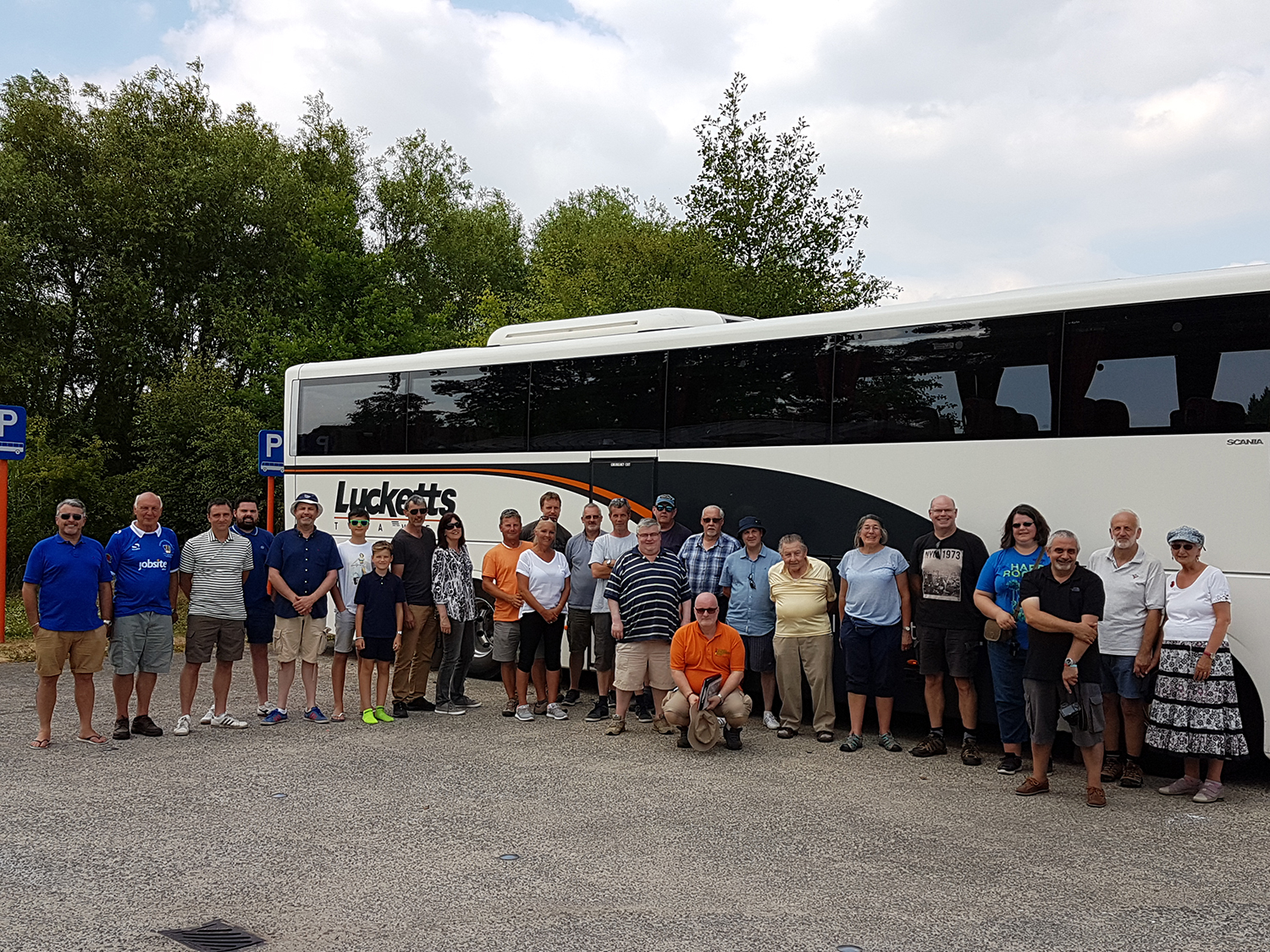
Pompey Remembers Tour 2017
